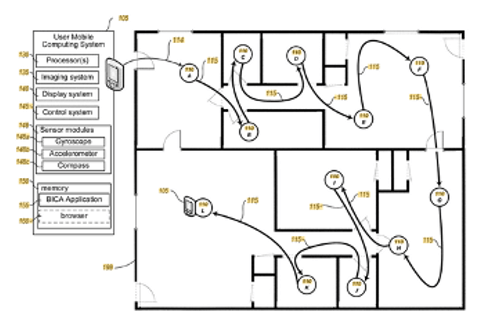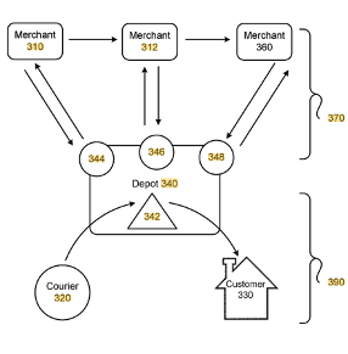In the complex world of patent law, choosing the right type of patent for your invention is not just a formality, it’s a strategic decision that can shape your innovation’s future. In this article, we provide a clear, concise overview of different patent types and providing practical tips to help you secure the best protection for your unique invention. Ready to discover how the right type of patent can be a game-changer for your invention? Keep reading.
Why You Need Patent Protection
For inventors and companies, patents provide critical legal protections and financial incentives that make the hard work of innovating worthwhile. A patent grants the holder exclusive rights to commercially control, make, use, or sell a novel, useful invention for a 20-year period. In doing so, it shields inventions from being copied or implemented by competitors without authorization or compensation. Understanding the core rationale behind patents can shed light on their strategic importance for protecting corporate competitive advantages as well as funding continued tech breakthroughs that shape modern life.
Five Important Reasons to Consider Filing for a Patent Include:
1. Financial Returns – Patents enable premium pricing as a first mover, licensing fees from authorized users, and lucrative patent portfolio sales. These income streams have created hugely profitable companies.
2. Corporate Value – Patents constitute a major portion of many firms’ intangible assets. Strong patent holdings increase ventures’ worth, attract investors, and provide leverage in transactions/exits.
3. Competitive Barriers – Market exclusivity protects against copycats eroding sales and market share, especially helping small players. This tempers the advantages of corporate giants during the protected period.
4. Investor Appeal – Patents demonstrate ideas’ viability and the seriousness of ventures to investors. Protecting IP promotes funding interest and better terms in securing outside capital.
5. Innovation Incentives – The Constitution highlights patents’ role in encouraging progress. By securing exclusive rights for a time, patents incentivize committing resources to create new inventions and technologies that benefit society.
The Importance of Choosing the Right Type of Patent
Choosing the right patent filing basis is pivotal as it determines the scope, strength, and enforceability of your invention’s protection. Selecting the appropriate basis—whether it’s utility, design, or provisional—establishes the foundation for your patent application. The choice impacts the duration of protection, the breadth of claims, and the level of detail required in the application. Opting for the correct basis ensures that your invention receives the precise legal coverage it deserves. For instance, a utility patent offers broader protection for the functional aspects of an invention, while a design patent emphasizes the ornamental aspects. Filing under the wrong basis might limit or compromise the coverage you seek, potentially leaving crucial elements of your invention unprotected.
Furthermore, choosing the correct filing basis is crucial for maintaining the integrity and validity of your patent. It influences the examination process and the level of scrutiny your application will face. Incorrectly selecting the basis might lead to challenges during examination, risking rejection or narrowing of the patent scope. Ensuring alignment between your invention and the chosen filing basis enhances the likelihood of a successful application process. It allows for clearer communication of your invention’s unique aspects, increasing the chances of obtaining a robust patent that safeguards your innovation effectively. Therefore, careful consideration and understanding of each filing basis are imperative to secure comprehensive protection for your invention.
What Are the Different Types of Patent Applications?
Inventors can secure rights over creations with different patent application types suiting distinct purposes. Understanding the options empowers strategic protection. The four main categories of patents are:
Provisional Patent
A provisional patent is a patent for a product or another piece of intellectual property that is still being developed and is not ready to be marketed. A provisional patent is valid for one year. Like other patents, provisional patents can be renewed, and it allows “patent pending” status through a simplified filing, proving early possession of ideas and workability. Inventors then have one year to submit a formal utility application.
Design Patent
A design patent is a form of legal protection for the unique visual qualities of a manufactured item. A design patent may be granted if the product has a distinct configuration, distinct surface ornamentation, or both. In other words, a design patent provides protection for the ornamental design of something that has practical utility. It protects ornamental elements applied to functional items like bottle shapes or shoe aesthetics and focuses heavily on visual representations over written descriptions. Design patents can also include user interface and device design.
Utility Patent
A utility patent is a type of patent that protects the functionality of a product, process, software, or machine. Utility patents, as opposed to design patents, are the most common types of patents issued by the United States Patent and Trademark Office (USPTO). They are the most common, covering machines, processes, manufactured items. They teach the public how to replicate and use inventions.
Plant Patent
A plant patent is granted by the USTPO to an inventor (or the inventor’s heirs or assigns) who has invented or discovered and asexually reproduced a distinct and new variety of plant, other than a tuber-propagated plant or a plant found in an uncultivated state.
Examples of Patents
A few examples by large companies include:
Google – U.S. Patent No. 10,241,668
Google patented an improved “drag-and-drop” feature that may be used in various mobile apps. Patenting a particular user-facing interface feature rather than the whole app in which it may be used is a strategy for protecting an invention that may be used in several mobile apps during the life of the patent. Patentable subject matter may be a feature within an app, rather than the app itself.

Zillow – U.S.Patent No. 10,375,306
Zillow’s patent covers a method of collecting data (in the form of photos) to produce a panoramic view inside real estate properties. The patent itself claims the entire mobile app – everything from back-end computing to displaying the produced panoramic view in a GUI. Here, Zillow opted for securing protection for their entire mobile app.

Facebook – U.S. Patent No. 9,578,011
Facebook patented a network architecture for implementing secure ID login to an application. Here, Facebook secured protection for a “back-end” function that may be utilized in a variety of apps, but which may never be noticed by an average consumer. Much like Google’s drag-and-drop patent, Facebook has opted for patenting a novel feature rather than an entire mobile app.

Airbnb – U.S. Patent No. 10,805,315
Airbnb patented a system and method for updating a booking entry for an accommodation listing and reservation system using a model that determines the probability that the accommodation listing would be able to be booked.

Coinbase – U.S. Patent No. 10,614,430
Coinbase patented a system and method for the transaction of bitcoin, which allows bitcoin to be sent to an email address with no miner’s fee. The system utilizes the private key of a Bitcoin address, then splits and distributes the key to keep the vault secure. This allows merchants and customers to instantly exchange bitcoin and lock in a local currency price.

Doordash – U.S. Patent Application No. 2020/0,183,414
This pending patent application from DoorDash describes an automated vehicle for improving last-mile delivery of real-time, on-demand orders for perishable goods. The invention includes a body with a storage compartment for storing perishable goods accessible by a user upon authentication, a sensor module to assist in navigating the automated vehicle, and an onboard computer system that processes the data needed to navigate the automated vehicle along roadways and pedestrian routes.

Some interesting plant patents include:
Coral Meidiland – Deep coral orange single blooms with a white center and prominent yellow stamens. U.S. Patent No. 118,165.

Gold Medal – A rare deep golden color, classic buds which open into large formal, abundant, and nearly continuous blooms. U.S. Patent No. 102,105.

Magic Meidiland – Clusters of deep pink semi-double flowers on this heat-resistant mounding ground cover shrub. U.S. Patent No. 118,166.

How Do You Categorize Patents?
Patent classification arranges inventions into technology categories, enabling targeted searches to evaluate novelty and inventive advancements. Structured hierarchies categorize the subject matter using alphanumeric codes.
Major Schemes:
- International Patent Classification (IPC) – The most common system used globally. Established in 1971 with over 70,000 granular codes.
- U.S. Patent Classification (USPC) – Legacy framework being phased out. Organized into 450 classes and 150,000 subclasses.
- Cooperative Patent Classification (CPC) – Enhanced IPC system harmonizing European, U.S., and international patent offices. Has more subgroups than IPC.
Shared Hierarchical Structure:
Technologies are categorized into sections, then classes/subclasses, groups, and subgroups. Sections include industry areas like chemistry, engineering, physics. Subclasses are divided into particular fields. Groups and subgroups stratify further.
Example code:
A45B 21/00 – Handles for walking sticks A – Human necessities section 45 – Personal or domestic articles subsection B – Walking sticks subclass 21 – Handles group
Benefits:
The benefits of arranged classifications of patents include accurate classification that allows users to find analogous patents to assess novelty and evaluate the innovative step, provides granular groupings to prevent reliance on keywords, and harmonizes with CPC for enhanced global searchability.
What Cannot Be Patented?
Before the USPTO grants the legal protection afforded through a patent, an invention must satisfy three core requirements: 1. novelty, 2. non-obviousness, and 3. demonstrated usefulness or utility. Strictly speaking, the subject matter must not have been publicly available anywhere globally, represent a sufficient inventive leap beyond current offerings, and serve a defined real-world purpose. Each of these standards sets a relatively high bar for patentability and ensures that trivial extensions of existing products or abstract ideas retain no barriers to legitimate competition. Read this article to learn more about the requirements for a patent.
As mentioned, the subject matter must satisfy three core criteria:
- Novelty – The invention cannot have been publicly disclosed, patented, or described in publications anywhere globally before filing. Performing a prior art search to prove novelty is recommended to prevent wasted time and lost revenue.
- Non-Obviousness – The claimed invention cannot be obvious to an expert in the technology field. It must represent a sufficiently inventive leap beyond existing offerings.
- Usefulness – The invention must have a specific, credible, and substantial real-world purpose. It cannot be a purely academic exercise, and the utility must be clearly definable.
Together, these requirements set a reasonably high bar to qualify for a patent’s exclusivity rights and ensure only meaningful advances receive protection. Merely extending current products or concepts is insufficient on its own, as utility also demands filling a previously unmet need. Meeting all three standards is a prerequisite to securing patent rights.
What Is the Most Popular Type of Patent?
Of nearly 12 million total patents awarded in the U.S., about 11 million have been utility patents. This dominant category provides legal protection for novel and non-obvious inventions of products, processes, or improvements thereupon. The other main types granted cover plant varieties and ornamental designs.
Utility patents secure extensive rights over functional creations like machines, manufactured goods, compositions of matter, or innovative industrial methods. Strict standards demand applicants prove advances wouldn’t be obvious to field experts through professional prior art searches. Applications also necessitate compelling, attorney-assisted written descriptions to overcome examiner objections.
When these thresholds are met, utility patents confer powerful legal exclusivities, making the extensive upfront work worthwhile. Hence their popularity for protecting impactful inventions and their prevalence outpacing all other patent categories combined.
How Long Is a Patent Valid?
A U.S. utility patent grants the owner 20 years of patent protection from the date the application is filed. However, maintenance fees must be paid periodically to keep the patent enforceable over its full term. For U.S. design patents, applications filed on or after May 13, 2015, receive a 15-year term starting on the date the patent is granted. Design applications filed before this date receive 14 years of patent protection from the grant date, although again with periodic maintenance fees required.
What Are the Steps for Filing a Patent?
- Determine the Type of Intellectual Property (IP) Protection You Need: Before beginning the patent application process, assess if a patent is the appropriate form of protection for your invention. Evaluate whether you might require a patent, trademark, copyright, trade secret, or a combination of these. Utilize tools like the IP Identifier and glossary to clarify distinctions among these forms of IP protection.
- Determine if Your Invention is Patentable: Explore the eligibility of your invention for a patent by understanding who can apply, what can be patented, and factors affecting patentability such as novelty and duration of protection. Familiarize yourself with the costs involved and consult a qualified attorney familiar with your proposed invention.
- Search for Prior Disclosures: Conduct a thorough search to ensure your invention hasn’t been publicly disclosed previously. Engage resources like the Patent and Trademark Resource Center (PTRC) or a qualified attorney. A thorough search by a qualified attorney may reveal information not found in your preliminary search.
- Choose the Type of Patent: Identify the specific type of patent that aligns with your invention—utility, design, or plant patent. Review the guidelines and resources available for each type to better understand their application processes and requirements.
- Consider the Costs Involved: Understand the fees associated with the patent application process, including filing fees, search fees, examination fees, and other potential costs based on the type of patent application submitted. Check the current fee schedule and explore fee reduction options for small entities or micro-entities.
- Explore International Protection Options: Consider the Patent Cooperation Treaty (PCT) for seeking international patent protection across multiple countries through a single application. Understand the process and resources available for pursuing international IP protection.
- Determine Whether to Hire a Patent Attorney or Agent: Recognize the complexities involved in preparing a patent application and engaging in USPTO proceedings. While filing on your own (pro se) is an option, it’s advised to consider professional assistance from registered patent attorneys or agents to navigate the process effectively.
- Prepare and Submit Your Application: Based on the chosen type of patent (provisional or nonprovisional), assemble the required documentation, including specifications, claims, abstracts, drawings, and forms. Follow the specific guidelines provided by the USPTO and ensure completeness and accuracy before submitting your application online through the Patent Center.
- Navigate Pre-Prosecution and Examination: Address any formalities or deficiencies highlighted by the USPTO promptly. Understand the notices you may receive, such as notices of missing parts or incomplete applications. Respond diligently and accurately to correspondence from the USPTO to avoid abandonment of your application.
- Await Examination Results and Respond Accordingly: After submission, the USPTO will examine your application to ensure compliance with legal requirements. Respond to office actions promptly, address objections or rejections made by the examiner, and consider options such as requesting reconsideration, interviews with the examiner, or appeals if needed.
- Receive a Notice of Allowance and Pay Issue Fees: If your application meets the requirements, you’ll receive a Notice of Allowance, indicating entitlement to a patent. Pay the issue fees within the stipulated timeframe to avoid abandonment and proceed toward patent issuance.
- Maintain and Monitor Your Patent: After patent issuance, maintain its validity by paying maintenance fees at specified intervals. Failure to pay these fees can lead to patent expiration and loss of rights. Set reminders and stay updated on fee schedules to ensure continuous protection of your invention.
Speak With an Experienced Patent Attorney
Not all patent attorneys are created equal. Working with Rapacke Law Group saves you time, money, and hassle. Our team of attorneys is highly specialized and offers consistent flat-fee pricing to make budgeting for your patent easier. Schedule a free consultation with one of our experts today.




